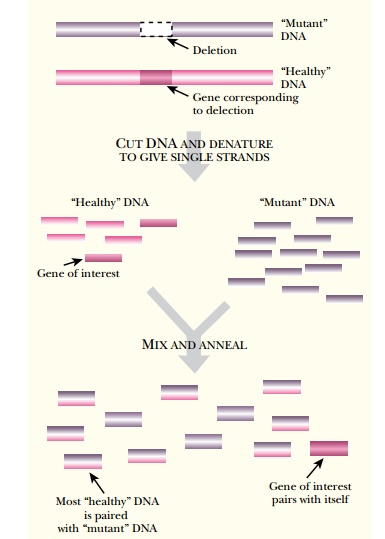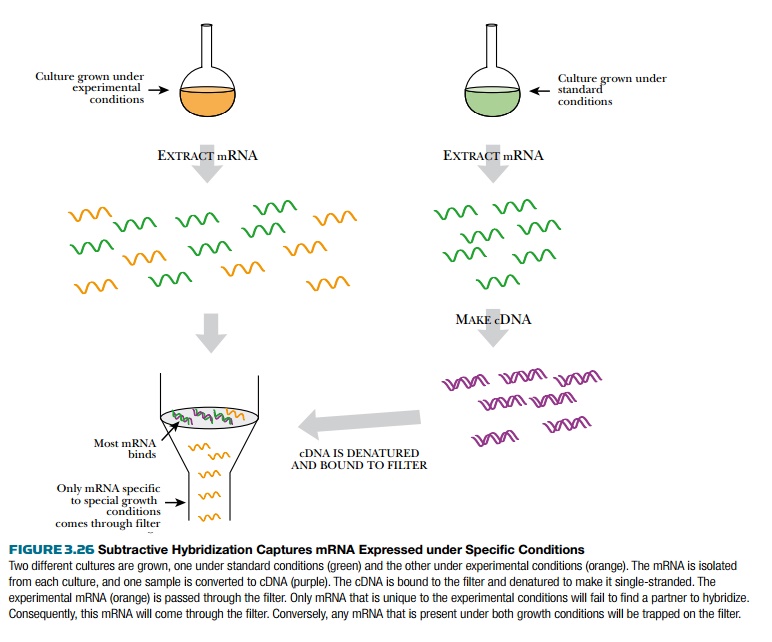Chapter: Biotechnology Applying the Genetic Revolution: Recombinant DNA Technology
Subtractive Hybridization
SUBTRACTIVE
HYBRIDIZATION
Subtractive hybridization is a screening method that allows researchers to find genes that are “missing.” For example, the gene responsible for a hereditary defect may be totally deleted in one particular victim. A healthy person will have the complete gene. Therefore, the DNA of the two people will be identical, except for an extra segment in the person without the disease. The DNA from the person with the deletion is isolated and cut with one restriction enzyme (Fig. 3.25). The DNA from the healthy person is isolated and cut with a second, different restriction enzyme. An excess amount of mutant DNA is mixed with healthy DNA, and then heating denatures the mixture. Slowly cooling the mixture allows hybrid molecules to form from the normal and mutant DNA. If two mutant fragments anneal, the dsDNA fragment will have sites for restriction enzyme 1 at each end. If two healthy fragments hybridize, the ends will have sites for restriction enzyme 2. If healthy DNA hybridizes with mutant DNA, the two will have nonmatching ends that cannot be cut by either restriction enzyme. All regions of the DNA will be able to form mutant:normal hybrids except for the region that is missing in the mutant DNA. This region of DNA can only self-hybridize, and the dsDNA formed will have sites for restriction enzyme 2 at the end. These segments can be cloned into a vector that has a corresponding restriction site. Overall, DNA that does not encode the gene of interest is excluded or subtracted by hybridization.


Subtractive hybridization is
also used to compare gene expression under two different conditions (Fig.
3.26). For example, a researcher can compare the genes expressed by E. coli at low temperature versus those
expressed in heat shock. First, separate cultures of bacteria are grown in both
conditions and mRNA is isolated from both cultures. The mRNA from the bacteria
kept at low temperature is made into cDNA to provide complementary sequences
for hybridization. The cDNA is bound to a filter, denatured to give ssDNA, and
incubated with the mRNA from the bacteria grown under the experimental
conditions (i.e., heat shock). The
mRNA that is present under
both conditions will hybridize to the cDNA on the filter. However, mRNA that is
expressed only under the experimental condition will not find a complementary
sequence and will be left in solution. These unique mRNAs are then made into
cDNA, cloned into a vector, and sequenced to identify genes that increase in
expression under hot conditions.

Related Topics